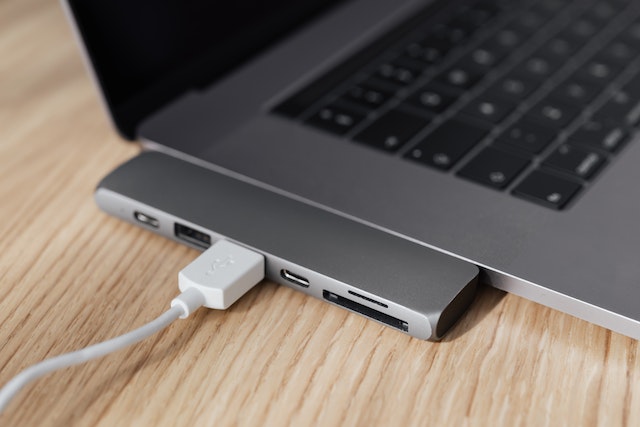Power connectors are used to complete or extend circuits by joining electrical components to a power source. You may need new power connectors if you want to repair, maintain, or expand an existing electrical power network, or to design a new one.
They can be used in a wide range of applications, meaning there’s an equally wide variety of power connector types to choose from. There is such a vast array of specifications available to suit different uses, so how will you know which type of power connector you need?
Here are some of the most important factors you should take into account when choosing a power connector to ensure it’s suitable for your project.
Current rating
Since the primary purpose of a power connector is to transfer electrical power, the first thing you should consider is the current rating your system requires. You’ll need a connector that can meet the minimum power demands, with a current rating high enough to handle the maximum capacity of your particular set-up.
Every power connector should have a current rating in amps (A) that explains the maximum capacity for each pin and the connector as a whole, so you’ll know whether the connection will be able to withstand the current levels you require without overheating.
It’s also important to remember that current and voltage are not the same and are not interchangeable. The specific volts (V) given in the connector’s product description explain the difference in the potential charge between points of a circuit – which could fail if it’s too low or too high.
If you’re looking for a heavy-duty power connector to facilitate higher electrical loads, you can’t afford to get this crucial aspect wrong – otherwise, you could compromise your power network.
Connector size
Typically with power connectors, the larger the contacts that a connector contains the higher its current capacity will be, so higher current ratings typically mean larger connectors. You’ll need to consider the contact number and arrangement, including the number of rows of pins and the pitch (spacing between pins), as these factors affect the overall size of the connector.
Each power connector should list a maximum wire gauge (typically in square millimetres) and a cable diameter range (in millimetres) amongst its specifications. These inform the thickness of the wire, which affects the product’s weight, current capacity, and electrical resistance, as well as the products it can safely connect to.
The shell or housing of the connector also needs to be an appropriate size to fit into your set-up securely. You don’t want it to be too bulky to fit into smaller spaces, but you also won’t want it to be unprotected and therefore easily damaged or disconnected.
Of course, there are situations that require very small connector sizes, such as sensors in medical equipment – so it’s possible to find tiny yet tough sub-miniature connectors for limited uses.
Configuration
Connectors function when corresponding inserts are connected to each other so the electrical current flows through. There are many different ways that the wiring behind the contacts can be terminated to support this connection, as well as different mounting styles that allow the connector to be mounted securely.
The wires establishing connections to the correct contacts can be secured using any one of several available termination styles. The most common include compression through crimping, melting solder, or tightening a screw in a pre-made opening. The layout of the connector pins and the corresponding socket will determine which termination method is most appropriate.
Connectors mount either to cable ends or to direct entry points, such as power panels and circuit boards. They can be mounted from the front or back, vertically or horizontally, or at an angle for side entry. How you need to mount the connectors will depend on the layout of your network and where you will be mounting them.
Some connectors may also be polarised, meaning that the housing only allows them to be mounted and connected in a particular orientation and not any other direction or angle.
Construction
Though the contents and capacities of the interior connector are the most important parts, they won’t be able to function as required in the long-term without an appropriate housing to protect the connection. The shell should be made of an insulating material and feature sufficient weather-sealing and vibration resistance for the intended environment.
Connectors should be able to engage and stay in place without being dislodged by environmental interference. This is why connectors with strong locking mechanisms are preferred when accidental disconnection could have critical consequences. Common locking mechanisms for connectors include screw style, push-pull, twist-lock, and bayonet coupling.
If your connectors will need to withstand a particularly challenging environment, you’ll need to consider protective finishes, including ingress protection ratings. Does the connector need to endure high pressures, high temperatures, or mechanical shocks? Does it need to be completely dustproof and/or completely waterproof?
If a connector has these qualities, it should be noted high in the product specifications, and the product may even be categorised by these factors to help you find them.
Ask an expert
If you’re still not sure which power connector type is best for your particular application, or you don’t know where to source the type of connector you need, the best thing to do is speak to an expert – such as a long-standing supplier of power connectors.
As an ISO 9001-certified company with more than four decades of experience in supplying connectors and related parts, you can trust Northern Connectors to provide high-quality power connectors from leading industry brands.
Even if you’re having trouble narrowing down the most appropriate connector or you don’t know a specific replacement part number, our technical team can work with you to determine which product would deliver the best performance for your needs. Why not reach out to benefit from our industry expertise today?

